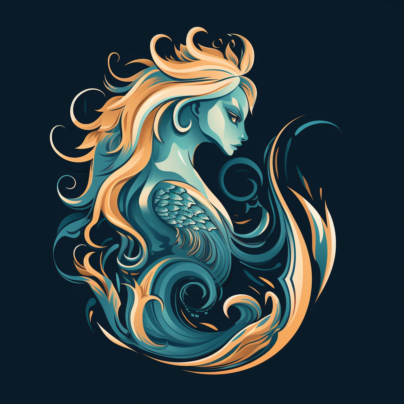Age VII: The Shattered Mantles
When crowns cracked, and the stars fell silent.
~800–500 years ago (c. 1200–1500 CE)
Theme Statement
Broken thrones and fractured heavens. The age mourns what was divine, and reforges what it can.
Overview
This age dawns in ruin and revelation. The great empires born in dominion now teeter on decay. Mantles of divine right are cast aside, shattered by betrayal, invasion, or inner rot. Where the gods once spoke in dreams and omens, only silence lingers. Some call it punishment; others, liberation.
Plagues crawl through the trade veins of continents. The Black Death decimates Europe and Asia, echoing through the spirit realms. In Mesoamerica, drought and unrest crack the veneer of Maya successor kingdoms. In Africa, the Songhai rise from Mali’s shadow, forging a golden empire amid spiritual unease. Japan’s Ashikaga shogunate wanes, and the Kamakura ghosts return. In the north, Norse colonies vanish beneath ice and whispers.
Constantinople falls. Byzantine splendor is scattered into relics and memory. Aztec priests dream of suns devoured by blood. In the Andes, Inca stonework binds the sky to mountain. Witch-queens and hidden mystics whisper that the gods are not dead, only changed. The heavens churn. Comets blaze and vanish. The aurora speaks in lost tongues.
Across the world, sacred orders fracture. The Knights of the Hollow Cross burn their own libraries. Mongol khans trade blood for silk, while in the jungles of Southeast Asia, Angkor’s temples are consumed by green hunger.
The old ways are questioned. In West Africa, griots speak of serpent-kings and sky-travelers. Norse sagas once filled with valor now turn to doom. In India, tales of Asura trickery and divine withdrawal are sung in secret. Polynesian seers invoke Tangaroa to protect the memory of drowned gods. Everywhere, heroes are chosen not by birth, but by omen.
Powers Beyond the Mortal Realms
- The Fiends’ Ascendancy: With the gods withdrawn and mantles sundered, fiendish hosts sensed a widening of the veil. Devils posed as forgotten deities, offering dark boons to desperate kings and broken clergy. Demonic incursions bled into the waking world through failed rites and corrupted relics. In isolated highlands and scorched cities, infernal cults blossomed—mirroring tales of rakshasa infiltrators, oni overlords, and African iron-spirits whose bargains carried terrible cost. Their rise whispers through forbidden epics and seared cave-wall art.
- The Wyrmshadow Courts: Dragons, long thought lost or sleeping, began to stir. The crumbling of divine order shattered ancient bindings—many dragons awoke beneath collapsed temples and salt-choked vaults. Some sought to rule once more, cloaking themselves in mortal dynasties. Others retreated into the world’s wounds, hoarding forgotten truths. These echo feathered serpents of Mesoamerica, the lung of Chinese legend, and fire-drakes of Norse and Slavic saga. Rumors persist of draconic courts forming along ley-scar fractures, led by oracles of scaled prophecy.
- The Hobgoblin Ascendancy (The Crimson Crescent): In the east, a disciplined hobgoblin empire—known in modern tongues as the Crimson Crescent—rose upon the ashes of fragmented states. Mastering gunpowder, steel, and astral compacts, they expanded from Anatolia into the Balkans and Mesopotamia. Their war-scribes spoke of destiny written in blood and eclipse. This empire mirrors the military genius and fierce ambition of the Ottoman rise, but with mythic undertones: bound pacts with desert spirits, celestial maps inked in brimstone, and throne-blades forged of fallen star-iron.
Land & Climate
- Blightlands: Fields blackened by plague and ash. Mirrors post-Black Death Europe, and abandoned terraces of the Andes.
- Ghost Forests: Sacred groves turned silent. Evokes Druidic groves felled by foreign kings, Siberian spirit-woods, and the haunted Ardens.
- Sky-Torn Valleys: Rift zones where ley lines rupture. Reminiscent of Icelandic eruptions, Ethiopian highlands, and Himalayan earthquakes.
- Salted Cities: Trade empires drowned or buried. Like Timbuktu’s silting, Khmer floods, and the lost ports of the Malabar coast.
Peoples & Cultures
- The Veil-Walkers: Wandering scholars preserving fractured truths. Reflects exiled mystics, Sufi wanderers, and Shaolin monks.
- The Ember Thrones: City-states clinging to divine succession. Echoes the Holy Roman Electors, Khmer god-kings, and the Ryukyu kings.
- The Weeping Host: Pilgrim-armies seeking vanished gods. Recall Bhakti ascetics, Aztec flower warriors, and famine-era pilgrims.
- The Tally-Keepers: Archivists of extinction. Inspired by Maya glyph-keepers, Ethiopian chroniclers, and Chinese court historians.
- The Mantleless: A rebellion of the untitled and cast-out. Parallel to peasant revolts, freed serfs, and maroon kingdoms of the New World.
Non-Human Peoples in the Age of Severance
Elves retreat deeper into the highlands and forests, their courts fragmented, some aligning with fae powers, others turning isolationist. Dwarves seal mountain strongholds, forging forbidden weapons and mourning the silence of the deep-earth gods. Orcish clans surge across the steppes and highlands, seizing shattered holds and building war-cults. Halflings turn inward, their lands enigmatic and shrouded in glamours, some serving as neutral waypoints for lore and diplomacy.
The Undying Threads
Undead activity grows in the absence of divine vigilance. Necromancers raise forgotten kings and conscripted dead to guard or despoil. Vampiric courts blossom in the Carpathian-like ranges, while haunted isles off distant shores whisper of lich-queens and barrow-lords. Revenant warriors rise to avenge ancient oaths. Ghost-plagues haunt battlefields where thousands perished nameless.
Folkloric Monsters & Beasts
- Revenants and Draugr: From Nordic coasts and Celtic hills, the dead return to fulfill broken oaths.
- Kappa and Jiangshi: Spirits and undead of Asia torment the riverlands and mountain valleys.
- Wendigo: Starved spirits that follow migrations across cold forests.
- Chonchon and Nahual: Winged heads and skinshifting sorcerers haunt South and Mesoamerican nights.
- Strigoi and Lamia: Predators of shadow and charm, weaving fear in Eastern Europe.
- Yuki-Onna and Nuckelavee: Manifestations of death-storms and ocean rot.
These beings, though rooted in regional myth, become globally feared as boundaries between realms thin and legends walk once more.
Real World Legends and NPCs
- Joan the Firebound: Flame-touched oracle based on Joan of Arc, wielding a sword said to burn falsehood.
- Owain ap Urien: Welsh knight reborn as a wandering blade-bound dreamer.
- Temujin Returned: A war-chieftain echoing Genghis Khan, riding with a host of storm-spirits and flame wolves.
- Taira no Masakado: Ghost-lord of Japan stirring yokai and restless souls.
- Amar God-Killer: African mythic hunter who wounded a god with obsidian.
- Lady Salomea of the Sickle Moon: A vampiric queen ruling eastern shadowlands, drawn from Slavic legend.
- The Obsidian Pharaoh: A resurrected ruler of Nile lands, half-god, half-mummy, commanding jackal armies and blackened storms.
- The Jade Whisperer: A blind sage from Cathay who sings stars back into alignment.
- Queen Laka the Dancer: Polynesian guardian of sacred flame and tide, invoked during sea-bound exoduses.
Legacy of the Age
The world is reshaped in scar and shadow. Heroes no longer wait for divine call—they are forged in catastrophe. The gods remain silent, or changed beyond knowing. Mantles are reforged in mortal hands. The mythic age yields to the age of legend.
How This Age Is Interpreted Today
Modern sages see this era as both cataclysm and crucible. Some claim it was the end of magic’s first age. Others say it marked the forging of true mortal destiny. Bards sing of its beauty and ruin in equal breath, and many seekers still wander its forgotten paths, chasing lost thrones and unburied stars.

 Buy me a coffee
Buy me a coffee